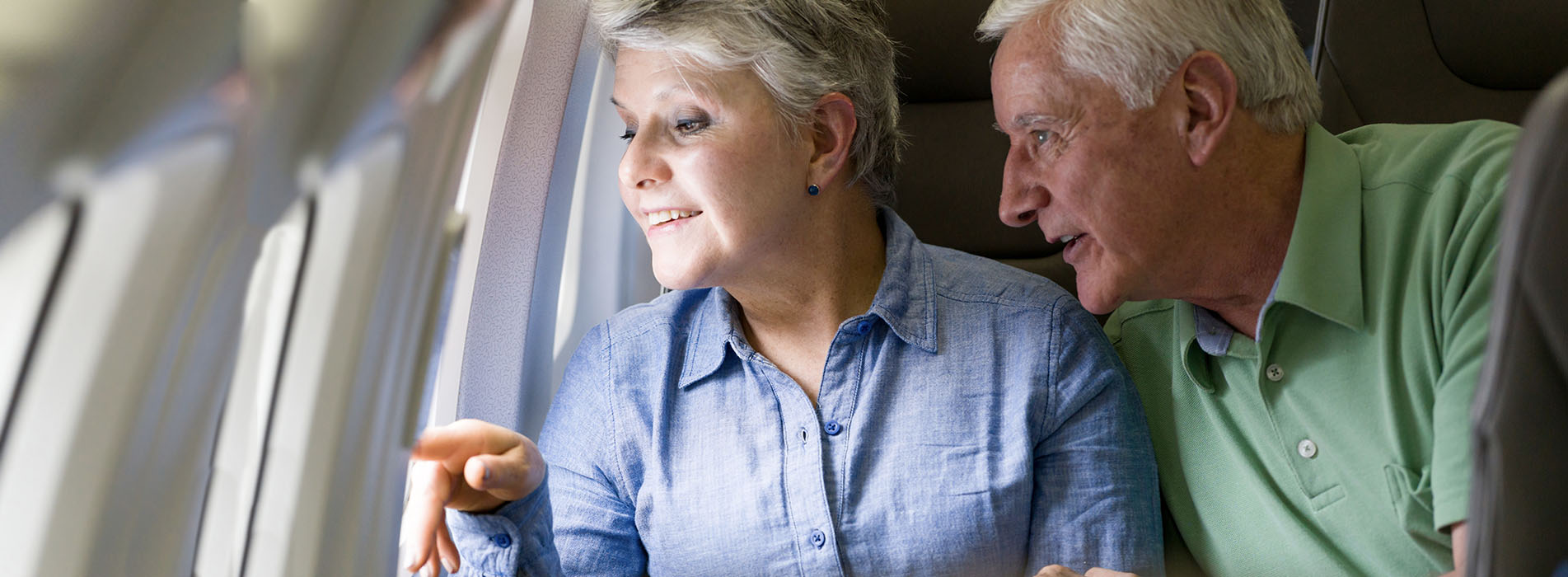
Altitude, Flying, and Oxygen
Some of you have expressed concerns about going to higher altitudes, either by flying or by driving up to the mountains. You may remember that as you ascend in altitude, the amount of oxygen available in the air decreases. That is because the decrease in atmospheric pressure causes the oxygen molecules to spread out (become farther apart). This means that whomever you are, if you travel to high altitude, your arterial blood oxygen concentration and your oxygen saturation will decrease. The way that many healthy people compensate for this problem is by increasing their rate and depth of breathing. But if you are a pulmonary patient and already short of breath, increasing your breathing does not sound appealing! And pulmonary patients who already have a low oxygen saturation at sea level may have an even greater problem in keeping their oxygen saturation levels up as they ascend to higher altitude. Even at 3,000 feet, there is a 10% drop in barometric pressure, and therefore a 10% drop in the number of oxygen molecules for each breath you take. Passenger airplanes are usually pressurized to between about 6,000 to 8,000 feet when the plane is cruising at 36,000 feet.
Before we get started with a discussion of oxygen needs, it is important to point out that many people with lung disease, even fairly severe disease, have been evaluated and found to have no significant problem with oxygen levels in their blood. If this is true for you, great! If not, read on.
How can the doctor tell if you need to be put on supplemental oxygen to fly across the country? Or, if you are already using oxygen at sea level, how do you know whether to increase the liter flow of your oxygen during a drive up to the mountains or on a flight? Unfortunately, needs vary with the individual and can be hard to estimate. Your physician might know from experience and from your history what your oxygen needs may be at higher altitudes. A 6-minute walking test to see if your oxygen saturation goes down (called desaturation), and how much you desaturate, can help with estimating your oxygen needs at various altitudes.
A High Altitude Simulation Test (HAST) might be ordered when there is concern about the safety of going on a long trip. This test provides accurate information on what your oxygen saturation will be, and is easily done in a pulmonary function laboratory by adjusting the percentage of oxygen given to you to breathe during the test and checking your oxygen saturation and shortness of breath.
If you do need oxygen when flying, make sure you contact your airline company well in advance! Rules vary from company to company so be sure you check on this well in advance of a trip. Make sure you understand what their rules are for oxygen use, or for taking along your equipment! If they want an oxygen prescription from your doctor, bring at least one duplicate!
What can you do if you find that the road you are driving for a long time is at a higher altitude than you expected? If you have any concerns, you might want to invest in an oximeter to monitor your saturation levels, as well as to remind you to do your pursed lip breathing if your oxygen saturation drop below 88%. See our Essentials article on Pulse Oximeters and Oxygen Saturation for more information on oximeters. What should you do if you are stuck at a high altitude much longer than you expected? Well, not very much except to relax, enjoy the scenery and avoid going out for a long hike. We promise it won’t kill you, and you probably won’t even notice a problem during a few hours of driving. If you do feel short of breath, now is the time to do your pursed lip breathing. Done properly, pursed lip breathing can keep your oxygen saturation as high as they would be on 2 liters of supplemental oxygen. But again, the best thing to do is to sit back, relax, and enjoy the scenery.
Happy trails!
Mary Burns, RN, BS
PERF Executive Vice President
